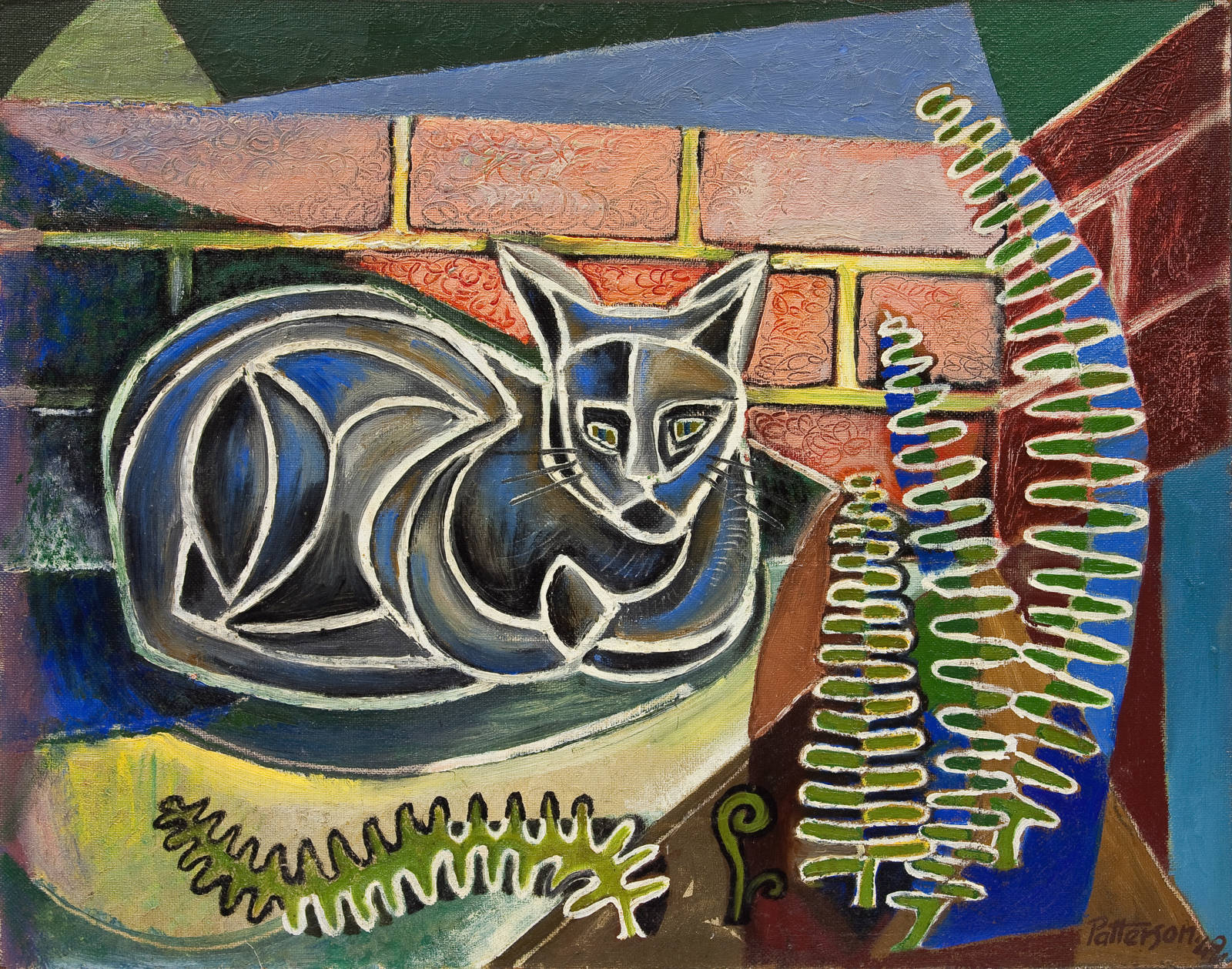PATTERSON, Keith;
Cat with Fern
1949
Oil on board
610 x 760mm

Keith Patterson is one of a group of artists who emerged just after the Second World War, being younger than better known figures such as Rita Angus, Colin McCahon, and Toss Woollaston. He and his close contemporary Dennis Knight Turner have never received the recognition that is their due in Aotearoa. Significantly, both spent many years living away from the country. Patterson was based in Spain from 1950.
As a young Aucklander, Patterson, who was widely known by the nickname ‘Spud’, was a member of the artistic and literary circle sometimes now called the ‘Landfall generation’, after the periodical in which their work often appeared. Patterson and his contemporaries revered Frank Sargeson and his attempts to create a writing style that could truly be said to convey the way New Zealanders spoke, felt, and thought. They were eager to prove their liberation from the dominant English tradition and to create something that was distinctively local.
In painting, an artistic nationalism was developed through the appropriation of European modernist notions of non-representational form. New Zealand architects of the post-war period, many of them friends of Patterson, were eager to create a style of domestic architecture that also had its roots in European and American modernism but aimed to produce houses appropriate to New Zealand’s climate and light conditions.
Cat with Fern shows a cat sitting in the sun in front of a brick wall. Patterson has clearly been looking at the work of the Cubists: Georges Braque, Juan Gris and Pablo Picasso. He reduces the eponymous animal to a series of interlocking shapes, although the overall form does not depart radically from our idea of what a cat looks like in reality. (It can be more of a struggle to recognise some of Picasso’s bulls as such.) The space behind the cat is deliberately deprived of a sense of perspective, or spatial distance.
There’s the typically New Zealand touch—the ferns, which again are highly patterned. Most of the surface has been painted with a brush, but some of the thicker surfaces have been scratched with the tip of the brush handle to produce a variety of textures. Ultimately, however, the work does little more than hint at the abstraction the artist would later embrace.
This work was given by the artist to Frank Sargeson, who loved cats. He propped it up on his mantelpiece unframed. There it sat for the next 40 years. It was purchased by the Fletcher Trust from the Sargeson Trust, whose members knew of curator Peter Shaw’s interest in Patterson, Turner, and their milieu.
Provenance
1992–
Fletcher Trust Collection, purchased from the Frank Sargeson Trust, February 1992
1982-92
Frank Sargeson Trust
–1982
Collection of Frank Sargeson, gift of the artist

